
Towards the close of 1865, some three or four months after Sri Ramakrishna had completed the sadhana of madhura-bhava, there arrived at Dakshineswar an august personage who was to play an important role in Sri Ramakrishna’s life. That was Tota Puri, a sannyasin of the Naga sect, who was an adept in Advaita Vedanta, and who, as a symbol of his having overcome bodyconsciousness, went about naked from one holy place to another. Sri Ramakrishna called him Nangta, or the Naked One. He is said to have practised Advaita discipline for forty years on the banks of the Narmada and to have attained nirvikalpa samadhi. After that, it was his habit to go about the country, always staying in the open, and never remaining in any place for more than three days. As Rani Rasmani’s temple extended hospitality to all wandering ascetics, Tota Puri also halted there on his return journey from Gangasagar. Sri Ramakrishna soon got acquainted with him, and Tota recognised in the former a highly competent spiritual aspirant to whom he felt inclined to impart the spiritual illumination he had gained.
Denne historien er fra February 2020-utgaven av The Vedanta Kesari.
Start din 7-dagers gratis prøveperiode på Magzter GOLD for å få tilgang til tusenvis av utvalgte premiumhistorier og 9000+ magasiner og aviser.
Allerede abonnent ? Logg på
Denne historien er fra February 2020-utgaven av The Vedanta Kesari.
Start din 7-dagers gratis prøveperiode på Magzter GOLD for å få tilgang til tusenvis av utvalgte premiumhistorier og 9000+ magasiner og aviser.
Allerede abonnent? Logg på

Panchakroshi Parikrama of Varanasi
At the snow-capped Kailas, the Divine Lord Shiva was seated with Mother Parvati.
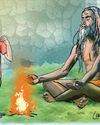
Gadai and the Monks
A fictional narrative based on incidents from the childhood of Sri Ramakrishna.
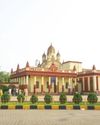
Chintayo momo maanosho Hori...
Sri Ramakrishna loved songs. There probably was no normal day when he did not sing some songs.
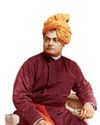
The Vedanta Vaccine
The world is still struggling under the impact of the pandemic due to Covid-19 for the last three years.

Chandrakirti's Chariot: Self in Madhyamaka Buddhism and Advaita Vedanta
The goal in Advaita Vedanta is the cessation of suffering and the attainment of true fulfillment. Suffering, according to this school, is due to ignorance of the true nature of the self and consequent erroneous identification with the body-mind.
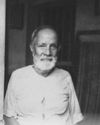
Reminiscences of Sargachhi
Question: यद्यदाचरतत श्रेष्ठसतत्तदरेवरेतरो जनिः। ‘Whatever a superior person does, others do the same thing!’ (Gita 3:21) – What does this statement mean?
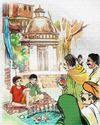
THE AUTUMN FESTIVAL
A fictional narrative based on incidents from the childhood of Sri Ramakrishna.

Bards of Guruvayur: Vilwamangalam II
Saints of India
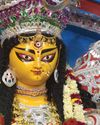
In the Universal Mother’s Divine Playground
Swami Vivekananda never taught the worship of Mother Kali. In a letter to Mary Hale he writes, “Kali worship is not a necessary step in any religion.
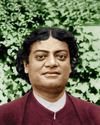
Swami Vivekananda: A Sportsman Par Excellence
In various books and articles, Swami Vivekananda has been called a spiritual leader, a prophet, a patriot, a social reformer, a philosopher, a yogi, a writer, an orator, an educationist, a musician, and so on.